Entropion is not typically considered a medical emergency, but it could cause ongoing discomfort and affect the animal’s overall well-being. The inward rolling of the eyelid can lead to eye irritation, excessive tearing, and, in some cases, corneal ulcers or infections. If the animal shows signs of entropion, consulting a veterinary ophthalmologist in Singapore can help determine the appropriate course of action.
Dr. Gladys Boo, a veterinary ophthalmologist in Singapore, evaluates entropion cases in dogs, cats, horses, and other animals. If the condition is severe, entropion surgery may be recommended to correct the eyelid position and minimise the risk of further complications.
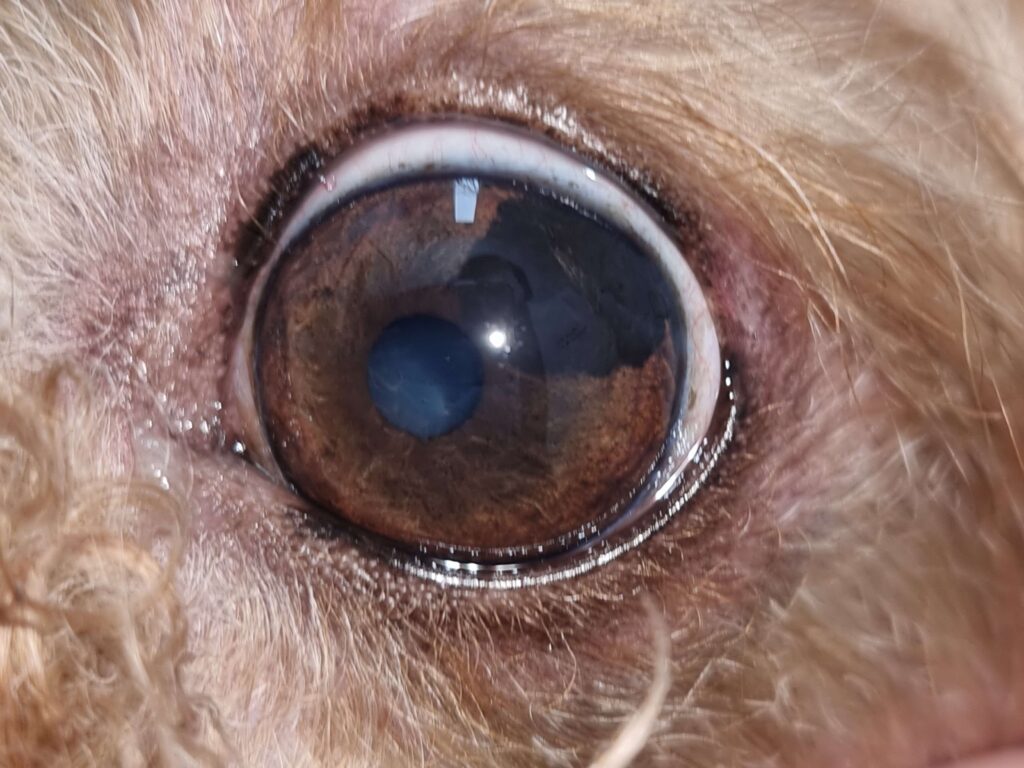
Entropion is an eyelid disorder where the eyelid rolls inward, causing the eyelashes and skin to rub against the eye surface. This condition leads to irritation of corneal ulcers.
Entropion is common in certain dog breeds, such as Shar Peis, English Bulldogs, and Retrievers, and in cats like Persians, due to their facial structure. Symptoms include:
If left untreated, entropion can cause persistent eye irritation and lead to complications such as corneal ulcers. These ulcers can be painful for pets and, if they deepen, may result in inflammation inside the eye, increasing the risk of vision loss. In severe cases, deep corneal ulcers can weaken the eye’s structure, potentially leading to a ruptured eyeball and irreversible blindness.
To minimise the risk of these complications, it is important to have your canine, feline, or other affected animals examined by a veterinarian as soon as symptoms appear. If necessary, entropion surgery may be recommended as an intervention.
Entropion surgery, or blepharoplasty, involves removing a small section of the eyelid to reposition it properly. This procedure helps prevent the eyelid from rolling inward and mitigates the risk of continued eye irritation, infections, and vision impairment. Early intervention could help mitigate the effects of the condition and potentially improve long-term eye health in canines, felines, farm animals, and zoo animals.
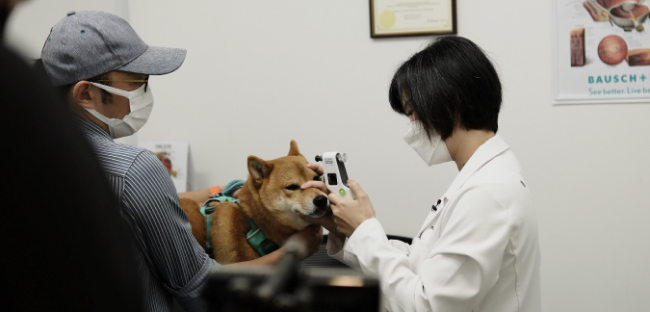
The process of pet cataract surgery involves several crucial steps to ensure the best possible outcome for your pet, and these steps can be broadly categorised into three stages:

A veterinary ophthalmologist will perform a thorough pet eye examination to determine the severity of entropion and whether they are fit for surgery. Further pet eye diagnostic tests may be conducted to ensure there are no underlying conditions that could compromise your pet’s health during and after surgery.
Pre-surgical preparation includes fasting guidelines to reduce anaesthaesia-related risks. Adult dogs and cats should not eat after midnight the night before entropion surgery, while puppies and kittens may be given a small meal in the morning before anaesthesia.
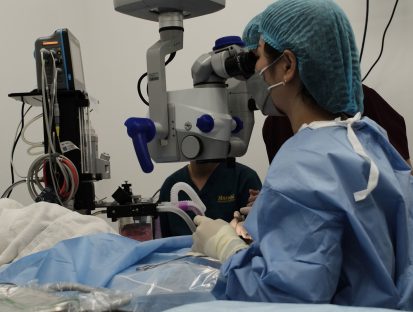
On the day of the surgery, your pet will receive general anaesthesia to ensure they remain still and comfortable during the procedure. To reduce the risk of infection, the surgical team will shave and disinfect the area around the eye before beginning surgery.
The veterinary ophthalmologist will make adjustments to the eyelid by removing a small section of tissue to correct its inward rolling. Sutures will be placed to maintain the new position and prevent further irritation. The entropion surgery is performed with careful consideration of the eyelid’s natural shape and function.
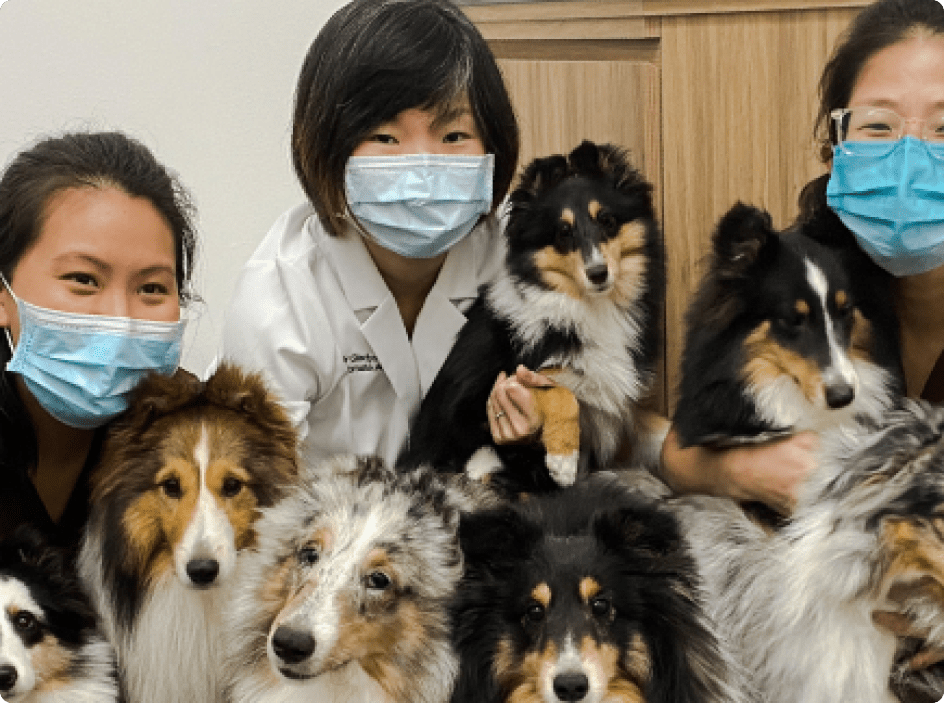
After surgery, your pet may appear groggy as the effects of anaesthesia gradually wear off. It can take 24 to 48 hours for them to fully regain alertness. During this period, ensure they rest in a quiet, comfortable space.
To protect the surgical site, your pet should wear an Elizabethan collar (E-collar/cone) at all times. This prevents them from rubbing or pawing at their eyes, which could disrupt healing.
Once home, offer food and water as instructed by your veterinarian. If vomiting occurs due to anesthesia-related nausea, wait 12 hours before offering food again to avoid further discomfort.
Proper aftercare is necessary to support healing and reduce the risk of complications following entropion surgery. Your dog or cat may experience mild swelling or discomfort in the first few days, but with appropriate management, recovery is typically smooth. Some post-surgery care tips to keep in mind include:
Make sure to adhere to your pet’s follow-up appointments so that you and the veterinary ophthalmologist can ensure the eyelid position remains stable and healing progresses as expected.
Concerned about your pet’s entropion? Consider scheduling a consultation with Dr Gladys Boo, the only American Board-Certified Veterinary Ophthalmologist in Singapore, to assess and manage your pet’s eye condition.
Dr Gladys Boo can perform entropion surgery on canines, felines, farm animals, and even zoo animals.

Dogs with entropion often exhibit signs such as squinting, excessive tearing, and keeping their eyes partially or fully closed due to discomfort. If left untreated, the condition could cause corneal ulcers and long-term eye damage. But with canine entropion surgery, veterinary ophthalmologists can remove a small section of skin from the affected eyelid to reposition it and minimise the risk of further irritation.

Cats with entropion may show squinting, eye discharge, redness, and a raised third eyelid. The condition can cause chronic irritation and corneal damage if not corrected. In entropion surgery for cats, a veterinary ophthalmologist removes a small wedge of skin or fur near the eyelid margin to adjust its position and mitigate eye irritation.

Large animals, including horses, farm animals, and zoo species, can develop entropion due to genetic predisposition or environmental factors. Treatment requires appropriate surgical techniques performed by a veterinary ophthalmologist, as well as careful post-operative care to support healing and reduce the risk of complications associated with their size and unique anatomical structures.
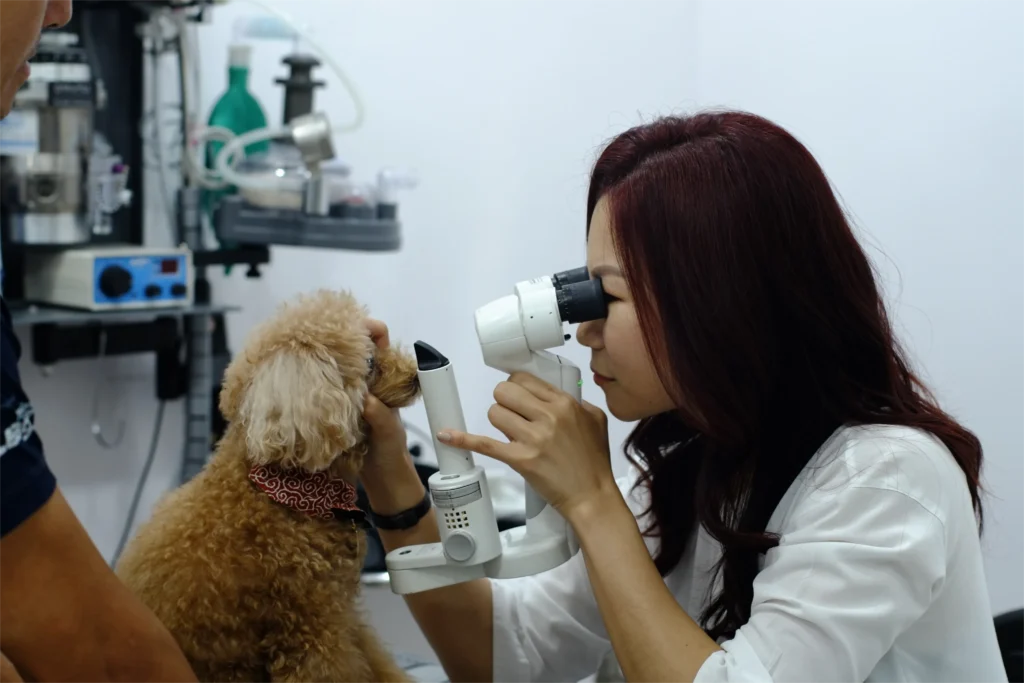
Complications from entropion surgery are uncommon. However, if your pet develops any of the following issues after the procedure, reach out to our clinic for further evaluation:
If your pet frequently squints, tears excessively, or has recurrent eye infections, a veterinary ophthalmologist in Singapore can evaluate whether entropion surgery is necessary. Clinics like The Eye Specialist for Animals can provide pet eye surgery for your cat, dog, or any farm or zoo animal.
Most pets typically experience improvement with minimal risk of complications. However, some cases may require minor adjustments for optimal results.
The cost of entropion surgery varies based on factors such as the severity of the condition, the complexity of the procedure, and the species being treated. Additional costs may include pre-surgical evaluations, anaesthesia, post-operative medications, and follow-up visits.
While entropion surgery is generally safe, it can still pose some risks. These risks include temporary swelling, infection, and minor bleeding at the surgical site. In rare cases, over- or under-correction may occur, requiring additional adjustments.
The recovery period for entropion generally takes 10 to 14 days for most pets. During this time, the animal should wear their recovery cone to protect the surgical site and minimise the risk of infections.
In some cases, entropion in cats can be managed with medication if the condition is mild or secondary to another issue. However, in dogs, entropion is typically a structural problem that often requires surgical intervention to mitigate ongoing irritation and infections.
Temporary tacking sutures or surgical staples, left in place for two to three weeks, may help manage entropion in puppies, foals, and sheep. For young dogs, multiple rounds of tacking may be necessary, as permanent surgical correction is generally more effective once the dog has reached a stable head size, typically around five to six months of age.